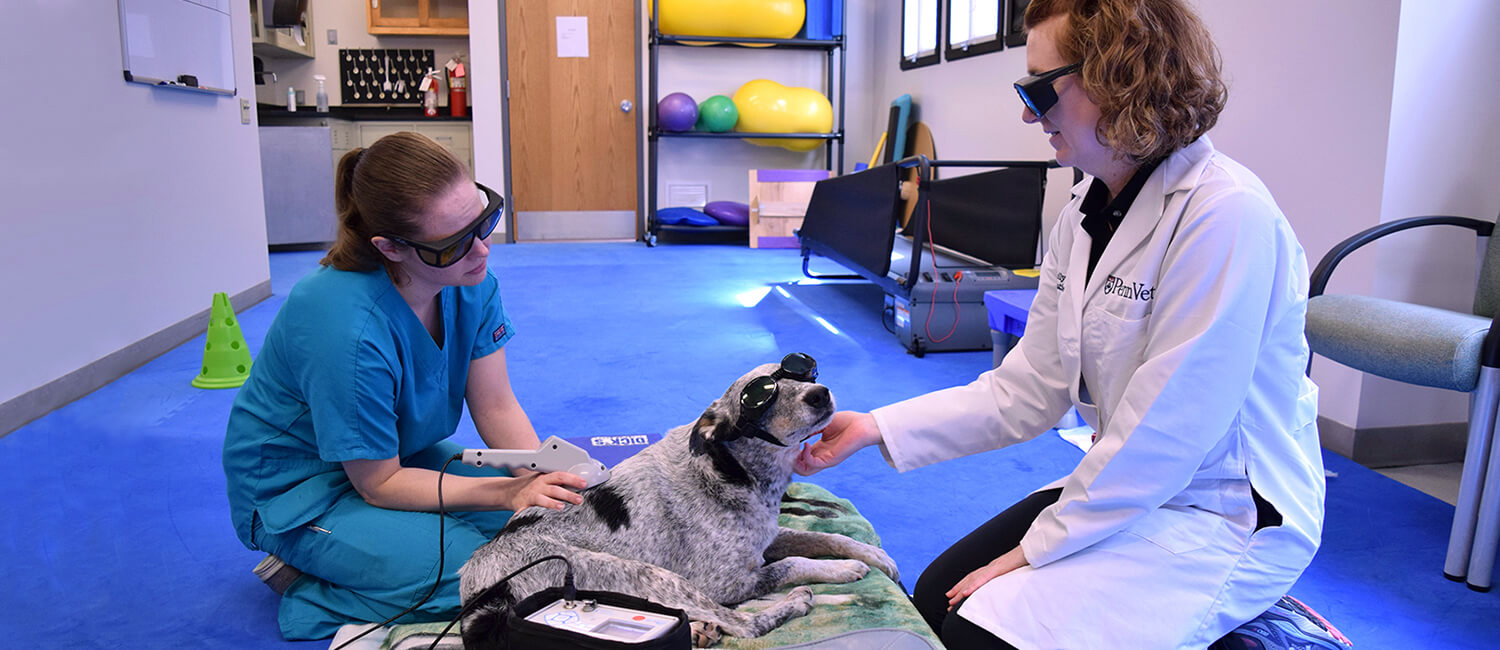One morning in August, the Laslocky family’s four-year-old Australian cattle dog, Ranger, was limping. By the end of the day, he was unable to stand and didn’t respond to any touch of his hind limbs.
“My vet had evening office hours so I rushed Ranger over as soon as I got home from work,” recalls Cory Laslocky. “The doctor suspected a neurological issue and recommended we go right to Penn Vet for evaluation. … Ranger was admitted immediately that night.”
The next morning, an MRI found a ruptured spinal disc. Scott Petesch, a resident in Neurology and Neurosurgery, performed surgery to relieve the spinal compression.
Even though surgery went smoothly and Ranger responded during recovery when his toes were pinched, the dog faced just a 50 percent chance of ever regaining use of his back legs.
So, Ranger’s Penn Vet care team grew to include Molly Flaherty, staff veterinarian in physical rehabilitation medicine, and physical rehabilitation medicine nurse Allison Kyler.
The day after surgery, Flaherty and Kyler started Ranger’s inpatient rehab program. “We began with acupuncture to stimulate his nerves and laser therapy to increase cellular energy for healing—both also help with pain relief,” says Flaherty. “Because Ranger couldn’t stand or move his legs on his own, we used an inflated peanut ball to support his body weight and mimic the natural sensations of standing. We wanted to jumpstart his neurologic awareness of where his legs are.”
Once a week since the end of August, Laslocky has dropped the dog with the two for a physical therapy regimen that includes movement activities, acupuncture, and laser treatment to facilitate healing, pain relief, and mobility. On other days, Laslocky and son Nathan take the dog through prescribed exercises and monitor his activity level. Ranger also regularly undergoes hydrotherapy at an outside facility.
“On his first post-op visit, Ranger could move his back legs a bit, but he wasn’t yet standing or walking,” says Flaherty. “A week later, he was able to stand on his own and take a few steps before falling. By mid-September, he could take several steps without stumbling. At the end of September, a month after his surgery, I met Cory and Ranger in the Ryan Hospital lobby, and Ranger proudly walked in on his own.”
Read more at Penn Vet News.








